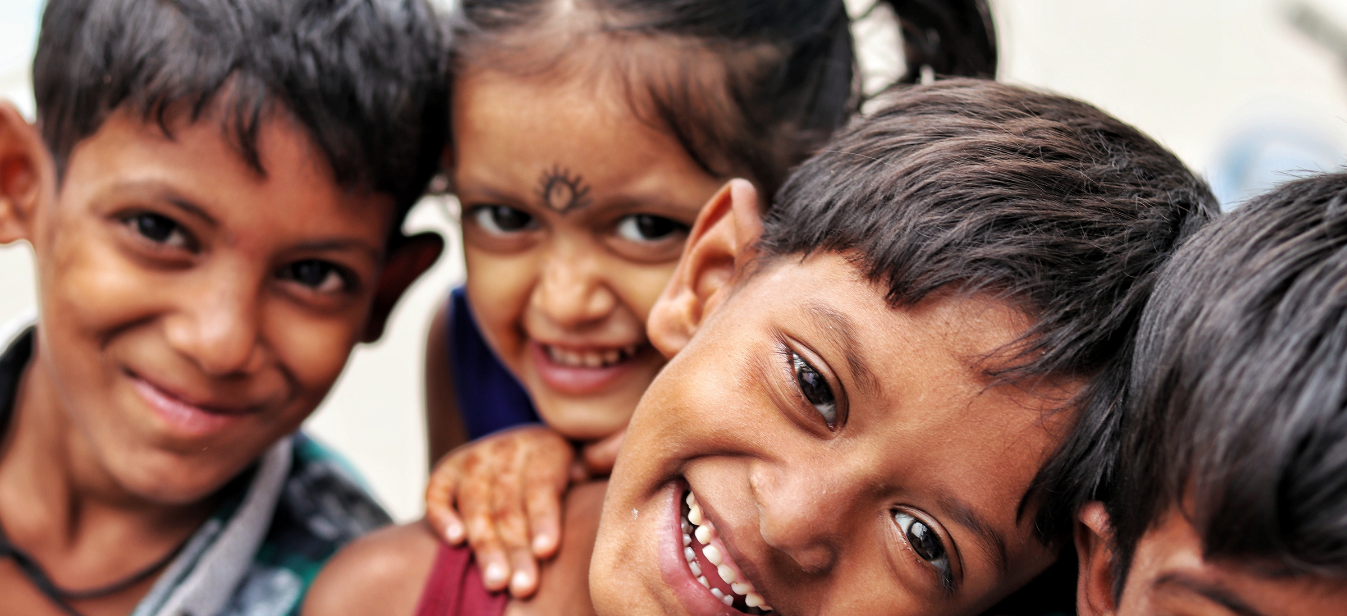

There is a very strong correlation between early learning and a positive long-term impact on the GDP. Multiple studies have shown us that early childhood is the most fertile, most crucial period, with 85% of the total brain development happening before the age of eight. Building these foundational skills in young learners contributes to future success, both their own and their nations’ too.
Many economists believe that an investment in early childhood education yields economic growth. India stands firm in its belief that a robust ECCE system strengthens our population; the Indian government allocated 4.6% of the GDP to the education sector in 2019-2020, with the National Education Policy (NEP) 2020 even pledging to raise this to 6%.
“The demographic trend shows that India will soon have a large ageing population which is supported by a gradually shrinking workforce. So, it is imperative to have this workforce firing on all 4 cylinders with high productivity. That’s the only way we can keep our economic growth rate going.” says Nisha Holla (Co-Editor & Author, Observer Research Foundation), during a panel discussion on ‘Decoding the economics of early childhood learning and its impact on India’s GDP’, conducted by Square Panda, in partnership with the Times Network, for a special #EarlyLearningMatters series.
*Watch the whole discussion here and follow our social media pages (Facebook, LinkedIn), for more information about this series.
HOW EDUCATION RAISES ECONOMIC GROWTH
The skills developed in early childhood will create a base for the enhancement of greater cognitive development, socio-emotional skills, reasoning, and more. This new and improved workforce will then find it easier to use new technologies and software, think creatively, adjust to the changing employment landscape, and generally be more accomplished as workers. Firms with better workers will, in turn, perform better. These firms go ahead and contribute to the economy as a spillover effect. Ultimately, the GDP of our nation will reap the benefits of a good early education system. This new educated workforce can then compete with their global counterparts, getting more mobile and adaptive. Beyond that, a more educated workforce results in a healthier environment with less crime and better functioning civil institutions.
FURTHER CASE FOR INVESTING IN ECCE
- Research Supports The Positive Connection Between Early Education And The Economy: Studies conducted by bodies such as UNESCO clearly show that investment in early years had the highest returns of any education and training program, recovering at least ten times the initial cost.
- Narrows Socio-economic Disparity: When high-quality education programs are made accessible to all children across India, each community fares better with marginalised communities seeing the highest returns.
- Benefits Outweigh Costs: The short-term costs of investing in early childhood education is offset by the immediate and long-term benefits that an educated workforce bring. Additionally, there is less need for remediation and special education, better health outcomes, lower criminal justice costs, and increased productivity, all of which contribute to the development of the nation.
- Multigenerational Effects: These educated and empowered citizens will not only reap the benefits of the strong ECCE foundation in their own lives, but will pass on their learning to future generations as well, multiplying the dividends from the initial investments.
THE WAY FORWARD
- Increasing Public-Private Partnerships: While the government has already been conducting exemplary projects to enhance early learning in India, like their ICDS schemes, there are multiple areas when a public-private partnership can add value:
- many private partners invest heavily in R&D for their own services and programs, giving these offerings a strong base of research.
- a partnership can allow the government to focus on the macro levels, while their private partners can impact each micro field and sub-specialisation.
- private companies are usually external companies that have been hired to achieve a specific goal; they can be audited and course corrections can be made as required.
- Increase Quality Along With Investment: An education is only as good as the educator. For better student outcomes and a strong foundational base, educators need to be trained in the pedagogy and the neuroscience behind early learning, along with 21st century skills. This improves classroom management and delivery of curriculum, which subsequently enhances learning outcomes.
- Effective Data On Performance & Assessment: For a clearer picture of how high-calibre ECCE projects and programs affect student outcomes, and to gauge their efficacy, there is a need to regularly collect and collate real-time data on overall school performance and student assessments. This will help policymakers decide their way forward, while clearly demonstrating the positive effects of investment in early learning.

Investing in early childhood programs serves to promote inclusivity in learning, to bridge the gap between disadvantaged children and their more advantaged peers. The country’s GDP, and health and welfare, reap the benefits of a solid early learning system, with its empowered and literate citizens.
We at Square Panda are committed to building a more literate India, with a large productive workforce capable of soaring to greater heights. To further this aim, we developed holistic programs based on NEP 2020 guidelines that impact the entire ECCE ecosystem in India-the anganwadi workers, the ECCE educators, and the children themselves. To learn more about these programs, visit ecce.squarepanda.in.
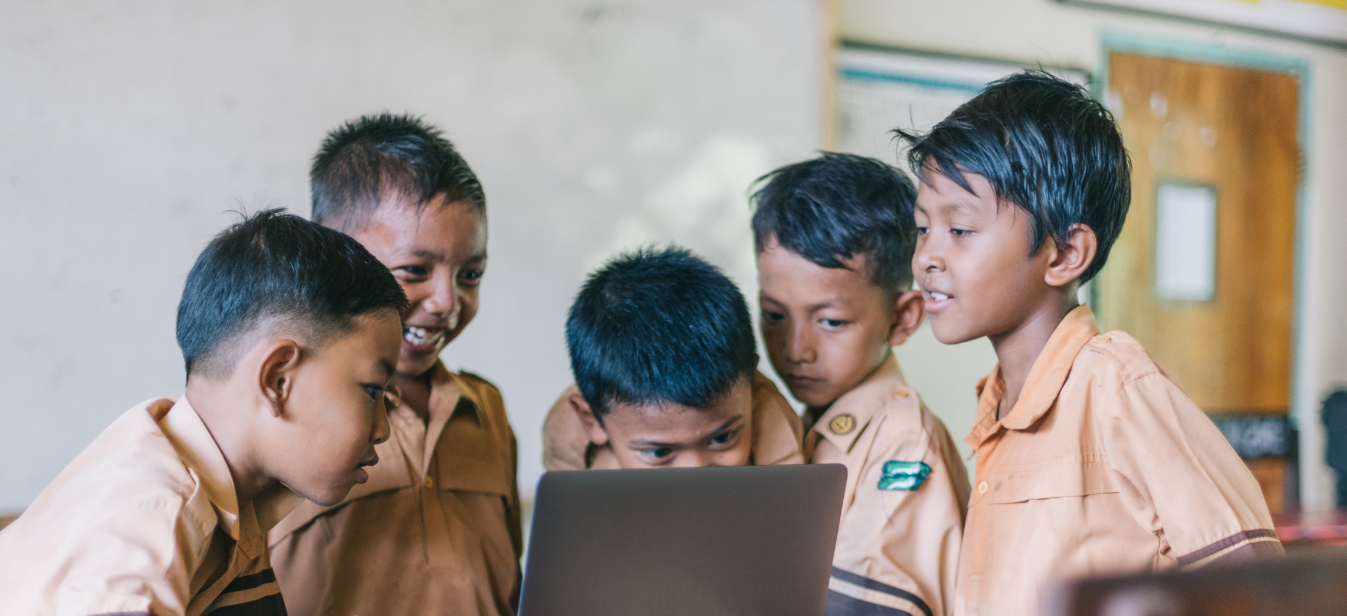

India has one of the largest education systems in the world, providing learning to more than 260 million students with around 1.5 million schools. Most of these schools depended on traditional methods of teaching and learning in the classroom, until the COVID pandemic pushed us to revise our existing techniques.
The blended learning model, defined as ‘a style of education in which students learn via electronic and online media as well as traditional face-to-face teaching’, was seen in some classrooms across the globe, but had experienced little popularity in India. With the migration of classrooms into the digital learning space, and in the interest of further boosting the education sector, the Ministry of Education has mandated blended classrooms as a new method of teaching and learning. Apex educational bodies in India like NCERT & CBSE have already announced their intentions of implementing a hybrid system of schooling with blended learning post the lockdown.
We at Square Panda believe this move towards a blended classroom will benefit learners across India, particularly young learners.
Here are our expert suggestions for setting up successful blended learning models in classrooms across states, divided as per stages:
PLANNING STAGE
- Redefined Educators’ Roles: Educators, particularly anganwadi workers (add link to anganwadi blog post) and primary educators, are the lifeblood of the teaching learning process. In the new blended model, each educator will play a new role with enhanced skill requirements. To see successful implementation, each educator from the ground up has to be trained in 21st century skills, to understand the neuroscience behind early learning and to enable holistic development of children.
- Restructure Curriculum: The existing curriculum needs to be reworked to adopt the NEP 2020 vision of experiential learning in a blended classroom. A flexible design, with multi-platform availability to reach even the most remote of areas, is a good start towards standardisation of education, ensuring no child is left behind.
- Factor In The Digitally Deprived Learners: The NEP 2020 addresses this concern, by concluding that, “the benefits of online/digital education cannot be leveraged unless the digital divide is eliminated through concerted efforts, such as the Digital India campaign and the availability of affordable computing devices. It is important that the use of technology for online and digital education adequately addresses concerns of equity.” Not every child will have access to digital tools necessary to make blended classrooms a success, and if they do, internet connectivity can pose a problem. It would be more effective to take these challenges into account at the planning stages itself, and work with tools and aids that provide easy-to-access offline content which can reach learners even in the heartlands without any trouble.
- Private + Public Collaborations: The ed-tech sector in India is booming, as evidenced by an Omidyar Network India & RedSeer Report, which estimates that by 2022, the K-12 ed-tech market in India will be worth USD 1.7 billion. This trend can be used to the government’s advantage. Partnerships and wide scale collaborations with educationally inclined companies and foundations can bring in the necessary innovation and tools that turn the NEP 2020 vision into a reality.
IMPLEMENTATION STAGE
- Retraining Educators: Every educator involved in ECCE needs retraining to acquire new-age skills that will help them optimise technology at the ground levels, for better teaching and learning experiences. The training must involve the currently envisioned pedagogy, keeping in mind the young learners’ educational needs. Again, NEP 2020 recognises this, adding value to content creation by teachers themselves, adding that they need to be trained and equipped with digital knowledge to be able to create online content modules with ease.
- Using Aids & Tools: Adopting blended learning models in classrooms across states would be easier with digital tools, to aid with implementation and future hand holding and support, for workers at all levels.
REVIEW STAGE
- Pilot Studies: Administrators can test the efficacy of programs and plans to be used in their blended learning program with a scaled down group, as a precursor to a complete roll-out. These results can be used for continuous improvement, to decide on the preferred forms of e-content, areas of challenge, and more.
- Different Blended Learning Modes To Suit Requirements: Face-to-face interactive learning sessions are extremely crucial to the success of blended learning classrooms, and need to be factored into the program structure, after the planning and implementation process. As states are armed with suitable knowledge about the extent of implication blended learning has on overall outcomes, they can suitably identify different modes of blended learning to suit each subject, classroom, district, and state.
While the recent pandemic pushed the Indian education system to adapt to a new way of learning, we saw a new beginning with more opportunities to bring in equality to learning. There is a need to seize this chance, making a concerted effort to impress the need for blended classrooms and learning across our country.
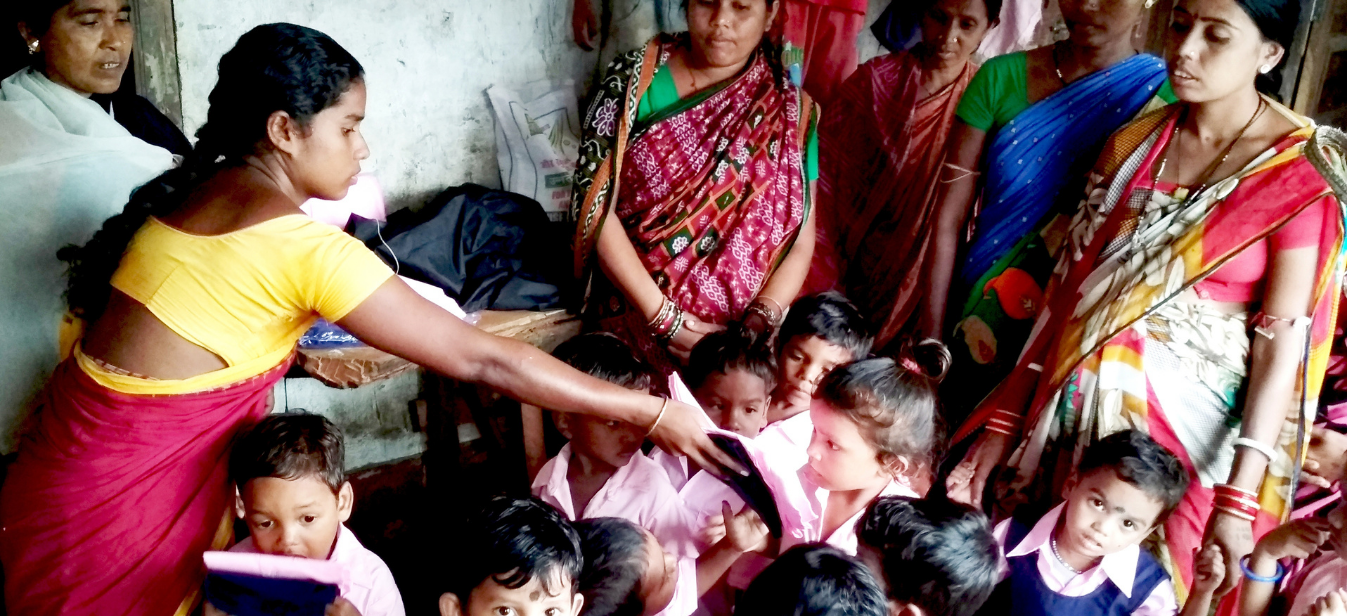

India has always been ahead of the curve, setting up schemes for early childhood development while the rest of the world was just talking about it, says Arjan de Wagt, UNICEF India’s cross-sectoral coordinator for early childhood development. The Indian government’s department of social welfare launched the National Policy for Children in 1974, which highlighted India’s commitment to “provide adequate services to children, both before and after birth and through the period of growth, to ensure their full physical, mental and social development.” A year later, in 1975, India launched its Integrated Child Development Services (ICDS) programme, with the help of the United Nations International Children’s Emergency Fund (UNICEF). One of the largest and most unique integrated early childhood programs in the world, the goal of ICDS was to help feed, educate, and care for vulnerable kids and their mothers.
ICDS services were offered through a network of anganwadis spread out across every region in India. According to the Ministry of Women and Child Development, every urban or rural community of 400 to 800 people has at least one anganwadi center. In each anganwadi centre, an anganwadi worker takes care of women and children, educates the community, and collects health and nutrition data on women and children. Data from 2017 states that anganwadis delivered preschool services to close to 33 million children.
Presently, official government data shows there are 13.77 lakh anganwadi centres operational in India, with a strength of 12.8 lakh workers and 11.6 lakh helpers. Each anganwadi worker is assigned to approximately 250 homes; this worker knows everything about her community-which family requires prenatal help, which household requires a supply of vitamins, how many homes have young learners, and how old each of them is. These are the people taking care of early education, nutrition, and health in rural areas. Anganwadi workers are connected to the community, to the parents, the children, in a way no other educator is.
Anganwadi centres face a host of challenges-multiple responsibilities of which early childhood education is only one, overpopulation leading to an unfavourable teacher-pupil ratio, crumbling infrastructure, among other problems-and still, anganwadi workers find ways to beat the odds and support their charges at all costs. *Read examples of how anganwadi workers (and other educators) are helping prevent a learning loss during the pandemic, here.
Anganwadi centres are the lifeblood of the rural educational landscape in India and can sometimes be the only foundation for learning these children will ever get.
Acknowledging the worth these centres bring to early education, food, and nutrition, The Women and Child Development Ministry, under whose jurisprudence the anganwadis fall under, plans to upgrade services and facilities at 2.5 lakh anganwadi centres over five years under the Saksham Anganwadi Scheme, according to an Economic Times report dated December 2019.
The NEP 2020 too, recognised the anganwadi’s contribution, mentioning, “To prepare an initial cadre of high-quality ECCE teachers in Anganwadis, current Anganwadi workers/teachers will be trained through a systematic effort in accordance with the curricular/pedagogical framework developed by NCERT.“
What Can We Do To Support Anganwadis To Improve The Quality Of Education?
- Support from multiple levels/stakeholders: The anganwadi centres don’t exist in silos; they are an intrinsic part of the community and must be treated as such. Strong guidance and backing are required across all levels, starting from the homes and moving up to the policymakers. There is a need to understand each problem these centres face, address each one, and work on plans and schemes to improve the quality in each anganwadi.
- Develop their skills through training programs: To ensure better outcomes across anganwadi centres, it is imperative that these catalysts of change are exposed to holistic development programs. Take Square Panda‘s Anganwadi Workers Upskilling Program, for instance, which empowers them with knowledge of ECCE and methods to create a conducive learning environment, to make children school ready and transform the anganwadi centre to their fullest potential. Our trainers can even teach in multiple vernacular languages for optimal understanding.
- Create a more comprehensive support system using AI and ML: Technology can be wielded to develop tools and aids to reduce anganwadi workers’ burden. Problems and queries can be dealt with quickly and expertly, using multilingual applications that connect anganwadi workers with early learning experts.
- Develop the centres themselves: A positive experience in these centres could translate into a journey into formal schooling, thereby improving their futures. At present, many anganwadis suffer from a lack of essential architecture and resources, making them less inviting to impressionable young minds. Recognising the worth of developing these centres, the NEP 2020 has mentioned in its policy a plan to strengthen anganwadis with “high-quality infrastructure, play equipment, and well-trained Anganwadi workers/teachers.“
Anganwadis nourish our children in the most crucial period of their lives, a period when their brain develops the most; to ensure universal access to ECCE, these centres need all-round support and training in pedagogy, digital literacy, and foundational literacy and numeracy.
See how Square Panda works to upskill anganwadi workers, here.


The National Educational Policy (NEP) 2020 has highlighted what the pandemic has shown us-teachers, and educators, are the true heroes, devising various strategies and designs to make sure learning reaches those across all levels in India, even the grassroots.
UNESCO reported that around 2.7 million teachers who were impacted by the pandemic, faced challenges while handling the new teaching-learning requirements. Despite the odds against them, educators across the Indian educational landscape have grappled with challenges the lockdown has brought and have come out on top, doing their best to significantly impact the lives of their students by making sure their learning continues. Today, let’s meet some of these inspirational educators:
#1: Anganwadi Workers Across States – The lockdown due to the COVID pandemic saw countless anganwadi centres temporarily closing their doors, and all their charges staying put inside their homes. That didn’t stop these amazing volunteers, who have been soldiering on since the beginning of the pandemic, hand-delivering educational material and involving parents in the learning process.
- In Odisha, the Department of Women and Child Development in collaboration with UNICEF launched the ‘Ghare Ghare Arunima’ initiative in April. The anganwadi workers focused on the males in each household, to ingrain equal child responsibility, reducing the gender divide, and increasing family bonding in this time of adversity.
- The ‘Aakar’ initiative was introduced across Maharashtra and saw an incredible amount of father-led participation. Everyday learning activities are shared with parents over Whatsapp; anganwadi workers explain the details in person to those who don’t have digital access.
- The state of Chhattisgarh has come up with the ‘Sajag’ initiative, where a short audio message about specific learning tasks is delivered directly to the parents’ inboxes or explained in person by anganwadi workers.

#2: Jeyaishwari R Nadar – Another example of a teacher’s dedication is Ms. Nadar, a mathematics teacher at the Gandhi Memorial English High School in Matunga, Mumbai. Her inventive teaching style went viral on social media after a journalist picked up this story in June 2020. Ms. Nadar was pictured conducting a class with the mobile phone on a refrigerator tray, which in turn was balanced on two containers. She came up with this idea when, as a math teacher, she realised she needed her students to simultaneously see the board while she took online classes. While she had tried whiteboards and other tools to teach, she found this particular technique makes it easier for her to broadcast notes.

#3: Shyam Kishore Singh – A headmaster of a school in Jharkhand’s Dumka district, Mr. Singh saw how many of his students faced learning challenges since the lockdown commenced because they lacked access to smartphones. He came up with an innovative way to keep their lessons going-by April 16, he had put up several loudspeakers across Bankathi village, where his Upgraded Middle School is located, to make sure his students heard him teach. These speakers have been put up on trees and walls in different locations across the village, with high volume speakers present where the number of students is more.
Dumka’s district education officer Poonam Kumari lauded this effort, adding that all 2,317 government schools in that region should emulate this model.
#4: Sonia Relia – While many educators are reaching out to their charges and students to prevent a learning loss, others are focusing on developing new-age skills in their peers and colleagues, through professional development courses. Among those ranks is author and teacher trainer Ms. Relia, who shares professional tips and advice with her fellow educators, through webinars and other online methods. She also regularly conducts storytelling sessions and fun activity-based talks with parents, teachers, and kids, to enhance the homebound teaching-learning experience.

Square Panda would like to appreciate the efforts of teacher Ranjitsinh Disale, who has been innovating teaching and learning long before the pandemic forced students into virtual classrooms.
Ranjitsinh Disale, a teacher from the Solapur district of Maharashtra, beat out 12,000 teachers from 140 countries around the world to win the Global Teacher Award this year, which is awarded by the London-based Varkey Foundation. His contribution towards the field of education-he supports girls’ education, he has contributed towards building coded QR textbooks, and he puts in efforts to generate interest about education among children from rural areas-won him a prize worth Rs. 7 crore. The first Indian to win this award, Ms. Disale says he will share 50% of his winnings with the other 9 finalists for the award, to support their incredible work and thereby provide quality education to thousands of children in 9 countries.

These visionaries are setting a strong example, collaborating with other stakeholders in the educational process—volunteers, edtech companies like Square Panda, parents, and children themselves—to garner results. These novel approaches exhibit how educators’ dedication can transform education and professional development in revolutionary ways.


Yesterday, December 3rd, was International Disability Day. Promoted by the United Nations since 1992, the significance of this day is observed around the world. At Square Panda, we believe inclusive classrooms providing access to quality teaching learning opportunities for all young learners and educators is a step towards a nation without discrimination. The Indian education system is addressing the learning crisis via the NEP 2020, and is working to provide equitable access to education, particularly early education, for all types of learners so children from varying socio-economic backgrounds and educational needs don’t suffer a learning loss.
Bringing About Inclusivity And Equality In Education
Education that reaches even the most disadvantaged and vulnerable so that they learn in the same way and classrooms as more advantaged children, requires a joint effort by all sections and levels of society.
– At the community level: After eradicating stigma and discrimination from the society, each stakeholder (parents, policymakers, students, etc.), need to be educated about the benefits of inclusivity in the classroom, for them and for the future of India.
– At the school level: Educators need to be trained to handle developmentally varied needs in multi-age classrooms, along with equal access to quality teaching-learning tools that personalise as per individual learning needs.
– At the national level: While the NEP 2020 gave a great impetus to equality in the Indian education sector, this proposal must be followed by complete support during implementation of plans by each state across India. Before, during, and after implementation of NEP-aligned programs, regular and continuous evaluations and assessments must be conducted, to ensure all children across India are reached by the proposed services.
Square Panda’s vision follows this principle of equal education for all, right from our inception.
Square Panda’s Origin Story
Square Panda was born out of our CEO and co-founder Andy Butler’s struggle to find appropriate learning resources for his dyslexic daughter.

Andy’s daughter was in Grade 1 when she was diagnosed with dyslexia. Her parents had noticed her turning from a happy child into a moody and frustrated one, who also often struggled with reading. Their search for appropriate learning resources to help her led them to consultants, special educators, and due to his wife’s contacts at Stanford University, some of the top researchers in the field. At this point, Andy began wondering how parents who lacked access to the contacts he did helped their children. Andy realised he needed to democratise the learning, making it accessible to all parents and children globally. Today, the work we do at Square Panda is a personal mission of Andy to impact early literacy and early learning, whether the learners are dyslexic or not.
Square Panda’s Work To Promote Inclusive Education
Square Panda is at the forefront of the changing educational landscape, supporting the Indian government in its efforts to provide equal access to early childhood education.
In Our Early Learning Programs: Square Panda focuses on multisensory and inclusive foundational learning programs to meet students’ diverse learning needs. Our adaptive platform uses AI software to personalise learning to individual children, helping tailor curriculum as per the requirements of each child.
In Our Educator Empowerment Programs: Our unique training programs empower educators with new-age skills and technical know-how, along with an in-depth understanding of how a child’s brain develops as they learn, adding in an important element of neuroscience understanding. Each program also equips educators with a working knowledge of the English language, furthering their Listening, Reading, Writing, and Speaking skills for better professional development.
Read more about our programs, here.
An inclusive system of education values unique contributions by students of all backgrounds, allowing diverse groups to grow side-by-side. Square Panda is collaboratively working with states across the country to bring inclusivity into ECCE in India, with its robust teaching and learning programs.
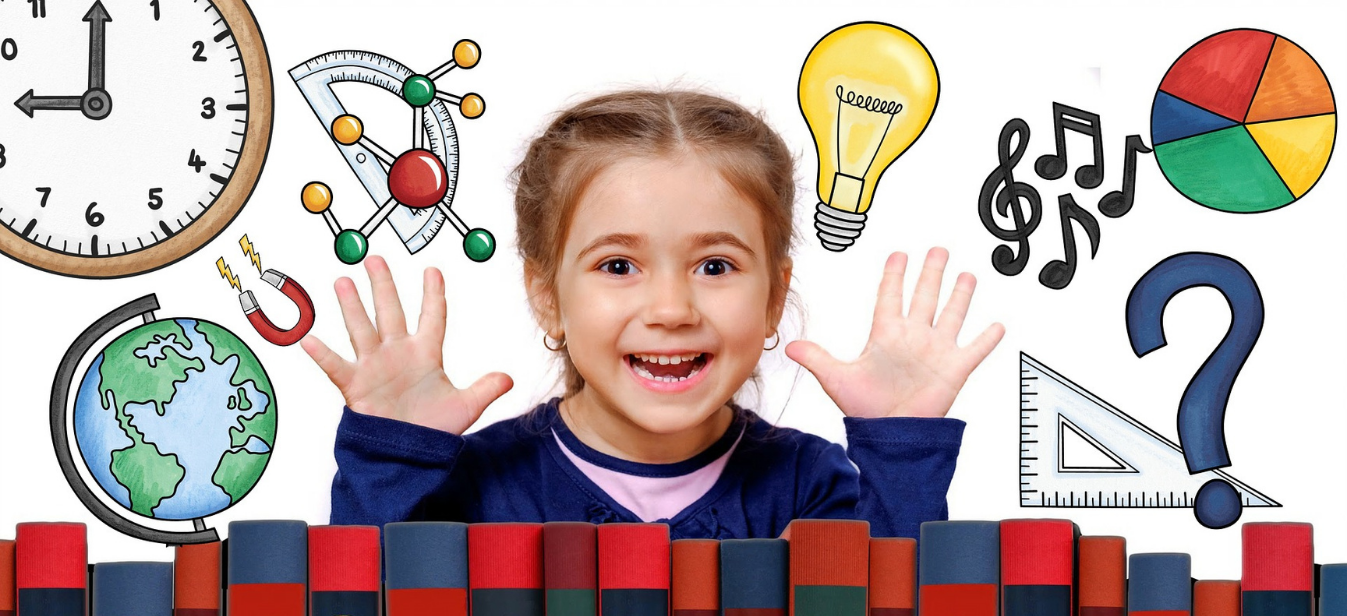

The NEP 2020 gives some much-needed attention to the role of assessments in education. In their vision to better the Indian educational landscape, the Ministry of Education is moving away from the old method of assessing, learning and reimagining the entire system to make use of this powerful tool correctly.
Presently, assessments in India, particularly in ECCE, garner no clear data to show the actual learning outcomes at the lower grades, particularly at key stages of transition, from primary to middle school, and then to senior. Thus, there is no opportunity for correction, leaving these young children with learning gaps until much later in life. “Assessment is more than adding remarks to a child’s mark sheet. *Watch us cover insightful educational topics for parents and educators, each week, in the Square Panda Sundays Expert Talk series!
The policy mentions assessments as one of its foundational principles, stating that there is a need to ‘focus on regular formative assessment for learning rather than the summative assessment that encourages today’s coaching culture’. Essentially, for a sturdy foundational learning base where young students achieve appropriate developmental goals, the education system needs to adopt a more formative assessment approach, as opposed to the current summative format.
*Formative Assessment is a wide range of formal and informal methods teachers use to evaluate student comprehension, learning needs, and academic progress, so they can modify their teaching and learning activities to improve student attainment. Some common methods include quizzes, conversations, activities, and more.
*Summative Assessment is taken at the end of instruction, usually conducted at the end of each term. This pen-and-paper approach takes the form of Board exams and terminal exams.
What Will Change
– Report Cards: No longer the same ‘mark sheet’, report cards will include details of each child’s development in the cognitive, affective, and psychomotor domains. It will also show self-assessment and peer assessment, and progress of the child in project-based and inquiry-based learning, quizzes, role plays, group work, portfolios, etc., along with the teacher’s assessment.
– AI-based Software To Support Students: The policy also supports the development and usage of AI-based software like Square Panda’s very own built-in assessment tool, which monitors real-time progress through our early learning platform, allowing educators and parents insight into each child’s learning process.
– School Examinations: To effectively track progress throughout the school years and not just at the end of grades 10 and 12, all students will take school examinations in Grades 3, 5, and 8, to test learning outcomes and application of knowledge in real-life, rather than focus on rote memorisation. Grade 3 examinations, in particular, will test students on the acquisition of foundational skills like early literacy, numeracy, and more.
– PARAKH: A new National Assessment Centre called (Performance Assessment, Review, and Analysis of Knowledge for Holistic Development) or PARAKH, has been proposed to be set up, to create basic assessment standards to be followed by all educational bodies. Coming under the purview of the Ministry of Education, this move could change the Indian educational sector forever, creating a new regulatory body for quality checks, and providing regular student data for better learning outcomes.
The Impact Of NEP-Reimagined Assessments
The aim of the NEP 2020 is to get in place a system of ongoing assessments right from the foundational level, to track and individualise each student’s learning. The potential impact such a system could have on the Indian educational system:
- Focuses On The Right Learning Outcomes: A formative style of assessment analyses critical thinking skills, clarity of concepts, and overall skill development, rather than simply checking memory stores of students at the end of the year.
- Stress-Free Learning: This new culture of evaluating the learning will help make the assessment process non-threatening for the students, reducing their exam fear to a great extent.
- Continuously Measuring Classroom Performance: A formative assessment style is typically periodic in nature, and involves an ongoing effort by educators. This showcases each student’s growth pattern throughout the year, while allowing the teacher to address individual children’s challenges in real-time, rather than wait for the year-end results.
There is a need for a robust system of assessment to help educators evaluate the progress of each student, and identify their strengths and weaknesses. This will help improve teaching methods as they identify the gaps in their teaching. The pace of learning for all the children is not the same and effective assessment tools will help educators understand the different learning levels of each child, which in turn will help them to customize the learning techniques as per each learner’s needs, something that the NEP 2020 is striving towards.
*Square Panda’s foundational learning programs and educator empowerment programs include continuous monitoring and assessments that are perfectly aligned with the NEP 2020’s vision.
What are your thoughts on the assessment system as the NEP envisions it? What would you like to see?
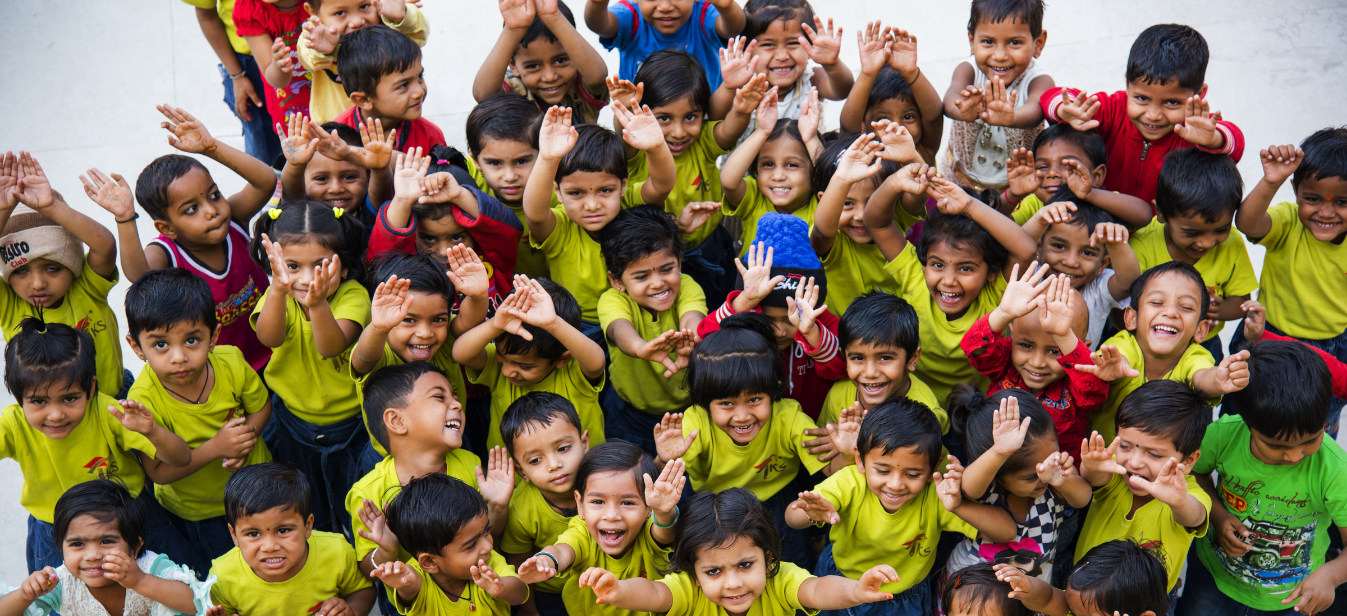

India is a land of multiple religions, cultures, ethnic groups, and languages, which come together to give our nation its status as a diverse country. We also boast of the largest education system in the world, catering to more than 260 million children. Social mobility makes the crowd in the classroom more and more diverse by each year; with such a diverse population, a crucial need for inclusive learning arises, which can successfully cater to the diverse learning needs of each student.
The need for inclusive classrooms emerges right from early childhood, which is the critical period of brain development.
The ASER 2019 report shows 90% of children in the age group of 4-8 years as enrolled in some type of educational institution. Of these, a large proportion of 5-year-olds was unable to perform expected tasks with ease, with children from less advantaged homes affected disproportionately. At this stage of development, early learning experts recommend students should be developing cognitive, social, and emotional skills as well as the conceptual foundations needed for formal schooling. While the recent policy released by the Department of Education (the NEP 2020) does mention a need to “ensure inclusive and equitable quality education and promote lifelong learning opportunities for all by 2030”, to create a force of literate future-ready youth, we need to translate the power of words into robust initiatives that can create a truly inclusive learning environment.
WHAT DOES INCLUSIVE EDUCATION LOOK LIKE?
The basic premise of inclusive education is that all children receive equal access to education rather than be segregated based on their individual, educational, social, emotional, financial, linguistic, or physical impairments.
Inclusive classrooms aim to bring all students together regardless of their strengths or weaknesses in any area and seek to maximize each child’s potential.
TODAY, WHAT ARE THE NEEDS AND CHALLENGES FOR ACHIEVING THE GOAL OF INCLUSIVE EDUCATION?
While the government of India has made strides in adopting inclusive policies to provide an equitable education for all, we still have a way to go before we can cater to multiculturalism and diverse learning needs successfully. The current education system in India faces some challenges for achieving inclusive education:
- A lack of trained educators.
- Large class sizes with multi-age classrooms.
- Linguistic diversity posing a challenge for educators.
- Marginalisation based on socio-economic, cultural, and ethnic backgrounds.
HOW QUALITY EDUCATION CAN BE EFFECTIVELY AND EFFICIENTLY DELIVERED FOR DIVERSE GROUPS OF CHILDREN?
The need of the hour is to have equal access to high-quality education right from the foundational ages, across geographical and socio-economic boundaries. For this vision to materialise, the Indian education system needs to adopt certain practices:
Educator Training, Empowerment, & Education: An educational system is only as good as its educators. If learning has to be streamlined, yet personalised and adapted to individual learning needs, educators, anganwadi workers, and balwadi workers across India need to be empowered to recognise and instruct as per the diverse learning needs. The NEP 2020 recognises the importance of training educators, by adding this clause to its document: “The awareness and knowledge of how to teach children with specific disabilities including learning disabilities will be an integral part of all teacher education programmes, along with gender sensitization and sensitization towards all underrepresented groups in order to reverse their underrepresentation.”
Adoption Of Adaptive Software: From the ground up, educational institutions need to equip themselves with adaptive software and technology, to help teachers create a holistic blended classroom that allows them to personalise learning as per each student’s learning level.
Changing The Mindset: While educators work on imparting education from the early stages itself, a collaborative effort needs to be undertaken to involve parents in the teaching-learning process. All stakeholders in the learning process-the parents, the educators, the policymakers-need to work in tandem to see successful learning outcomes in inclusive classrooms.
Need For Flexible, Adaptive Curriculum And Learning Tools: Every child learns differently, and a one-size-fits-all approach is detrimental to the acquisition of learning. Something that the NEP 2020 mentions too, an adaptive blended curriculum that works with each learner’s learning level, can serve to assimilate students of all kinds and ages into inclusive classrooms.
“Education is the single greatest tool for achieving social justice and equality. Inclusive and equitable education – while indeed an essential goal in its own right – is also critical to achieving an inclusive and equitable society in which every citizen has the opportunity to dream, thrive, and contribute to the nation. The education system must aim to benefit India’s children so that no child loses any opportunity to learn and excel because of circumstances of birth or background. This Policy reaffirms that bridging the social category gaps in access, participation, and learning outcomes in school education will continue to be one of the major goals of all education sector development programmes.” – NEP 2020
Policies provide a good model to promote inclusive education. Presently, we need to transfer learnings from the policy to the education sphere. In a diverse nation like ours, a multicultural perspective in the education sector starting from the foundational stages is what will help us create a truly unified country that boasts equality across the Indian educational landscape.
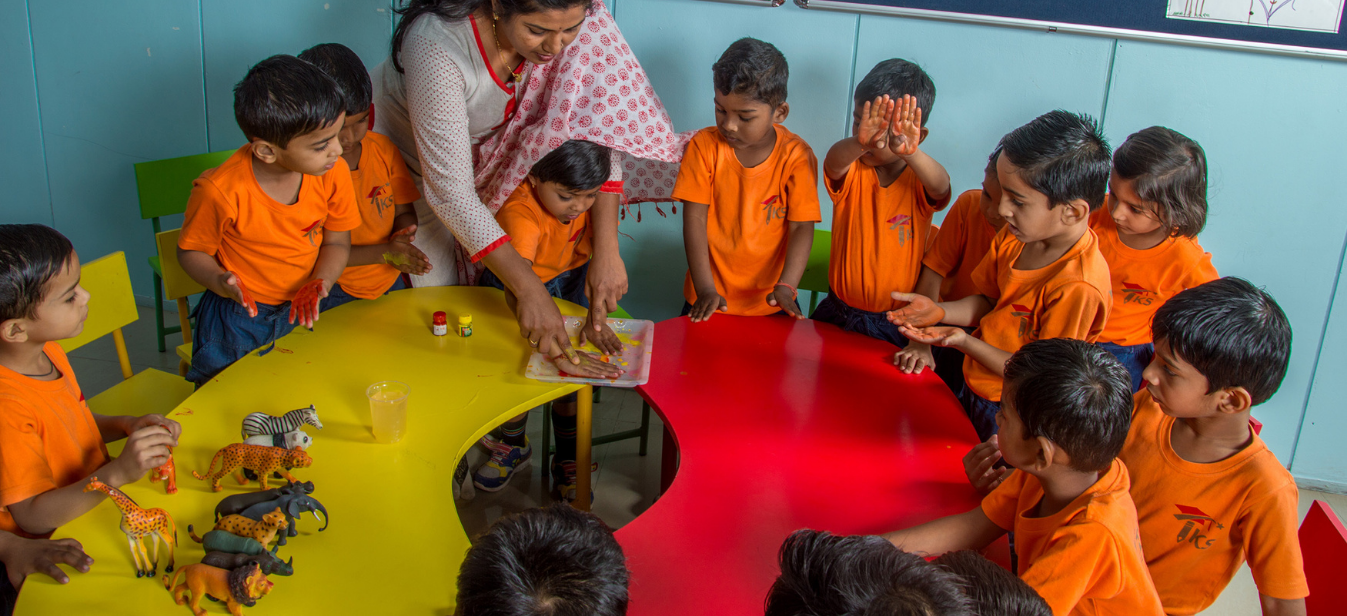

WHAT IS EXPERIENTIAL-BASED LEARNING & TEACHING ?
The term ‘experiential learning’ is used to talk about learning that is gained by experience or ‘learning by doing’.
Fun Fact: The experiential learning concept has been around for a very long time, and was first explored in the education and learning context by educationists like Jean Piaget, among others. It was made most famous by American educational theorist Professor D.A. Kolb, who showed that mastering expertise is a continuous process of experience, reflection, conceptualisation, and experimentation.
In India, experiential learning can be likened to the Gurukul education prevalent since ancient times across India. The students learnt by performing various tasks under the guidance of the Guru (teacher). Schools across India have already been practising some form of activity and experience-based learning, but the Department of Education has taken this one step further by necessitating experiential learning including learning that has elements of enquiry, gamified, activity-based, story-based, in Early Childhood Care and Education (ECCE), along with parallel teacher training programs to help educators understand the right way to impart such instruction.
Read more about the crucial impact of teacher training on the NEP 2020 here.
Some examples of experiential learning in the classroom:
- The Rainforest Learning Centre in the USA includes experiential education in almost all aspects of their curriculum. Their daycare and preschool-age learners are introduced to environmental clean-ups and animal adoptions, where they not only clean garbage and play with pets, but understand the results of their actions on the environment and community.
- Square Panda conducted pilot studies with our early learning system across schools in India. We provided young students with access to our early literacy platform, where they were taught to start reading the English language using stories and activities. In a period of a few weeks, with no extra intervention at all, we saw a marked improvement in the students’ learning outcomes, in skills like word reading and sentence reading.
- Mahindra International School (India), takes its primary school children on field trips as a part of their academic learning programme. Incorporated during school hours, these trips introduce young children to physical learning environments like zoos and farms.
WHEN DOES EXPERIENTIAL LEARNING HAPPEN ?
True experiential learning takes place when learners get immersed cognitively, emotionally, behaviourally, while reflecting and processing each experience, which then leads to a change in perspective, comprehension, thought, and behaviour. The next step is the application of the newly acquired learning to real-time events, turning these students into individualised learners who are well on the path to future success.

WHY EXPERIENTIAL METHODOLOGIES ARE THE FUTURE OF EDUCATION IN INDIA
The pedagogical approach that is experiential learning has the potential to revolutionise early learning, changing the Indian educational landscape as we know it, for the better.
For Children:
- Future-Ready Skills: An experiential base of learning provides children with real-life experience to match textbook teaching, which can be applied to problems for more practical use of knowledge.
- Personalisation: Traditional learning in India works on a one-size-fits-all approach at present, which affects learning outcomes. With a more experience-based approach, the learning modules can be specifically catered to each child’s individual requirements, enabling better skilling.
- Increased Engagement: Fun stories, activities, games, music, and other aspects of experiential learning all serve to keep young children engaged and exhibiting high levels of motivation as they immerse themselves in the experience.
For Educators:
- Improved Teaching Skills And Competencies: Educators are a very crucial part of ECCE, being responsible for young learners’ development and growth in this foundational period. Personalised, experience-based instructions will help educators professionally develop at a much faster rate while strengthening their subject matter knowledge.
- Knowledge Of Experiential And Activity-Based Teaching Learning Techniques: When educators are trained using experiential methods, their capacity for imparting knowledge using those same techniques increases exponentially, improving the learning outcomes, creating a more holistic development of the students.
- Mindset Changes: Explaining to educators about various styles of teaching is vastly different from allowing them to experience it. Hands-on experiential learning activities have a drastic effect on the mindset of educators, allowing them to relate to the theory, and put it into practice in the classroom.
WHY BUILDING ECCE PROGRAMS USING EXPERIENTIAL TEACHING-LEARNING METHODOLOGIES IS A BETTER IDEA
To ensure a higher quality of foundational learning in ECCE programs across India, there is a need to incorporate the NEP 2020’s vision of a comprehensive experiential teaching-learning methodology. Here’s why we think integrating experience-based instruction into the early classroom has a higher learning outcome:
- Blended Classrooms Can Be The New Norm: Instead of rote learning and traditional classrooms, a new blended form of teaching takes its place, where digital learning is combined with physical instruction. Experiential learning will be interwoven with online learning, creating a virtual safe space for real-life simulations, increasing young children’s engagement, and overall learning outcomes.
- Gamified Learning: An educational approach to get students inspired and learning via game-based elements, gamification increases the enjoyment of learning, and thereby, retention. When backed by a research-based curriculum, gamified learning develops critical and strategic thinking, supporting students across different learning levels.
- Educator Empowerment: It’s not just students who benefit from a holistic program that teaches via experience. Educators can be trained and empowered to deliver high-quality content, develop strong subject knowledge, and polish their professional skills, using experiential teaching methodologies.
- Playing-&-Learning Activities: “The importance of play-based activities, especially for young learners, cannot be highlighted enough. This approach to learning sees children develop essential life skills like critical thinking, gross and fine motor skills, and much more”, remarks the curriculum head for Square Panda India, Ms. Neha Shah, when asked about the impact this particular experiential learning method has on early childhood education. Even the NEP 2020 itself documents its importance, by stating, “The learning in the Preparatory Class (a class each young learner will attend before the age of 5) shall be based primarily on play-based learning with a focus on developing cognitive, affective, and psychomotor abilities and early literacy and numeracy.”
This application of theory and academic content to real-world experiences within the classroom and other surroundings allows young children to learn, explore, and respond to situations appropriately. ECCE benefits from such experiential programs by promoting increased aptitude and cognitive development in the early years. India is shedding some much-needed light onto this teaching-learning methodology, increasing adaptation of 21st-century skills and techniques for a better, more literate India.
Square Panda’s foundational learning program and educator empowerment programs have a holistic approach to teaching and learning, via experiential and activity-based methodology. These research-based techniques use multisensory elements, storytelling, music, play-based activities and other experiential elements to achieve better learning outcomes and optimal results.
What is your take on experiential learning in the Indian classroom? How do you think it benefits ECCE? Comment below.
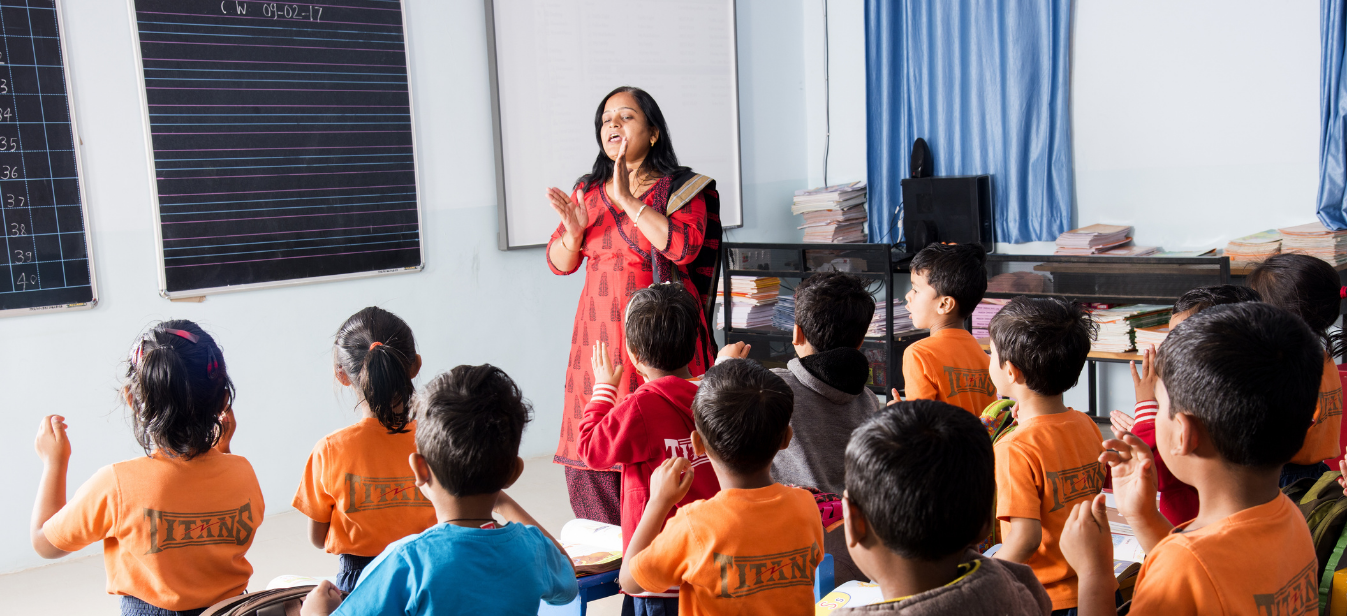

The continued growth in information processing, and the advent of technologies like Artificial Intelligence and Machine Learning in education, is a game-changer for education, and consequently, the educators. The people we entrust with our children’s education have a very important role to play in their futures and the future of the country as a whole; to accomplish this crucial task, they need to be empowered with thorough guidance and training, with complete assistance in developing 21st century-appropriate skills. To directly quote research studies conducted over the years, “Students succeed when intensive, comprehensive, and high-quality prevention and early intervention instruction is provided by well-trained and well-supported teachers”*.
At present, the traditional method of learning in India involves a blackboard and reading from the textbook, a method of rote learning that is outdated for the changing educational landscape. To enable the well-rounded development of children, educators (especially ECCE educators), not only have to function as high-quality content creators but also have to understand the neuroscience behind early learning and the ecosystem that comes into play when a young child begins to learn.
Unfortunately, the teaching profession in India is faced with a multitude of challenges:
- A basic level of proficiency: Currently, educators across India only have basic skills needed to impart education and train young minds to be future-ready. The onus at present is on developing high-quality educators who help mould a stronger generation of future citizens.
- One-teacher-fits-all: Students across different grade levels study together in one classroom or Anganwadi, with only one teacher explaining all the subjects. Here, subject matter expertise is a problem, along with the appropriateness of curriculum as per the individual learning needs for every child.
- Administrative duties: An already burgeoning workload is further burdened by a host of administrative tasks. For example, teachers are required to handle extracurricular activities, data collation to help with the creation of physical reports, and more, along with teaching their young charges.
- Availability: A less than optimal pupil-teacher ratio, existing training curriculum that requires an overhaul as per the changing needs, and more challenges, see many opting out of choosing teaching as a profession. NEP 2020 has allowed for multiple provisions and considerations in its approach to teacher education, but finding and retaining a high calibre of educators remains a challenge.
- Other problems: Those in the education profession are also bogged down by limited resources (hardware and funding), a vast geographical area with many remote places, a lack of support, and, due to COVID, a drastic and sudden shift of the traditional classroom towards a more blended approach, which sees educators struggle to embrace technology like never before.
The Department of Education, in its latest National Education policy, states, “In all stages, experiential learning will be adopted, including hands-on learning, arts-integrated and sports-integrated education, story-telling-based pedagogy, among others, as standard pedagogy within each subject, and with explorations of relations among different subjects. To close the gap in achievement of learning outcomes, classroom teaching learning methodologies transactions will shift, towards competency-based learning and education”.
This policy reiterates adopting new-age skills into the existing teaching framework, adding important experiential methods including gamification, storytelling, art, music, and more. The new education sector as envisioned by the policy aims for holistic, all-round development of young learners by qualified and trained educators.
To see a substantial positive shift in the Indian education sector, particularly in ECCE, educators existing and new will have to be trained in the pedagogy of today’s changing world while also gaining an in-depth understanding of a child’s neurological development as learning is imparted. And, as the coronavirus pandemic has taught us, to adapt to the changing educational ecosystem, educators across India must develop a strong understanding of digital literacy.
The Impact Of empowering the Educators On Indian Education:
- Impact On ECCE: Robust educator training and empowerment programs have a strong impact on early childhood education. A deep understanding of subject knowledge coupled with an awareness of the neuroscience behind early learning results in powerful skill development in the young learners, building a strong foundation for lifelong learning, setting them on a path for success. For example, an English language teacher who knows their subject can easily explain topics ranging from phonological awareness to idioms and puns, without any loss of understanding on the part of their students.
- Developing New-Age Methodologies Of Teaching: The National Educational Policy 2020 describes a whole new way of teaching, including a host of 21st century skills like ‘experiential learning via gamification and apps’, ‘holistic learning’, and more. These new techniques will entice learners more, enabling an improved attitude towards education, which results in an improved and enhanced academic performance.
- Subject Matter Knowledge Improves: A stronger grasp of the subject in question will see educators being able to explain concepts and ideas better, increasing the comprehension by students.
- Improved Performance Of Students: Studies have correlated teacher training to stronger student test scores, adding that the main reason for the improved performance was because the teacher had a better grip on the subject matter.
- Contribution To Economic Prosperity: High calibre educators who are trained, professionally developed, and dedicated, form the backbone of society, transferring knowledge and culture to batch after batch of learners. Forming an essential part of the radical changes we wish to see in our nation, these educators contribute a lot to the economic prosperity of a country.
“The quality of teacher education, recruitment, deployment, service conditions, and empowerment of teachers is not where it should be, and consequently the quality and motivation of teachers does not reach the desired standards. The high respect for teachers and the high status of the teaching profession must be restored so as to inspire the best to enter the teaching profession. The motivation and empowerment of teachers is required to ensure the best possible future for our children and our nation.” -NEP, 2020
A well-trained educator can not only mould a child’s entire future from the early years itself, but they also enhance their talents, helping them thrive in tomorrow’s world of work.
Square Panda is working towards the empowerment of educators via robust and innovative empowerment programs.
*Reference: (c.f. Al Otailba, Connor, Foorman, Schatschneider, Greulich, Sidler, 2009; Al Otaiba & Torgesen, 2007; Rashotte, MacPhee, Torgeson, 2001; Shaywitz & Shaywitz, 2006, Torgesen, 2007; Vaughn & Wanzek, 2014; Vellutino & Fletcher, 2007.).
Recent Posts
- Teacher Absenteeism: Causes, Effects, and Solutions
- How Holistic Education Cultivates Independence in Children
- From Memorization to Understanding: Transforming Teaching Methods
- Bridging Early Education Gaps for Better Learning Outcomes
- The Role of Holistic Infrastructure in Boosting Learning Outcomes
Categories
Archives
- March 2025
- December 2024
- October 2024
- September 2024
- July 2023
- June 2023
- May 2023
- April 2023
- March 2023
- February 2023
- January 2023
- December 2022
- November 2022
- October 2022
- September 2022
- August 2022
- July 2022
- June 2022
- May 2022
- April 2022
- March 2022
- February 2022
- January 2022
- December 2021
- November 2021
- October 2021
- September 2021
- August 2021
- July 2021
- June 2021
- May 2021
- April 2021
- March 2021
- February 2021
- January 2021
- December 2020
- November 2020
- October 2020
- September 2020
- July 2020
- June 2020
- April 2020
- July 2019
- June 2019
- May 2019
- April 2019
- March 2019
- February 2019


